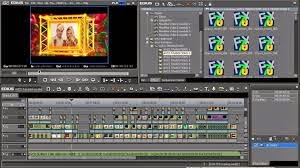Category

Categories provide a helpful way to group related posts together, and to quickly tell readers what a post is about. Categories also make it easier for people to find your content.
How to download xplode pro for edius full version hellow dosto! Mai is video me bataya hu ki aap kaise edius ke liye xplode pro ko download kar sakte hai or install kar sakte hai aap ise 3 part me.  How To Install Xplode in Edius 5 1.Edius Xplode Installation problem Fix in This Tutorial 2.How to Install Xplode in Edius 5 3.How to Use Xplode in Edius 5 Download. Canopus Xplode Pro 4 60 for Edius 5 x4 x part2 (48.9 MB) Canopus Xplode Pro 4 60 for Edius 5 x4 x part2 Source title: Canopus Xplode Pro 4.60 for Edius 5.x4.x.part2.rar mediafire download.
How To Install Xplode in Edius 5 1.Edius Xplode Installation problem Fix in This Tutorial 2.How to Install Xplode in Edius 5 3.How to Use Xplode in Edius 5 Download. Canopus Xplode Pro 4 60 for Edius 5 x4 x part2 (48.9 MB) Canopus Xplode Pro 4 60 for Edius 5 x4 x part2 Source title: Canopus Xplode Pro 4.60 for Edius 5.x4.x.part2.rar mediafire download.
All Unicode Symbols with Names and Descriptions on One Page.
Categories are similar to, but broader than,. For more information on the differences between categories and tags please check out. Depending on the theme and widgets you have activated, categories can be displayed at the top or bottom of posts, on the individual post view, on your, and/or.
You can assign multiple categories per post (you must assign at least one), and categories can be organized hierarchically. Adding Categories via the site settings To create a new category, head to My Site → Settings → Writing. There, you will see an option to manage categories. Select it, and click on Add New Category. From this page, you can also create sub-categories. To do so, click on Add New Category and in the window that pops up, select the category that you’d like to have as the parent category. Adding Categories via the Categories & Tags module You can also assign and/or add new categories to posts before you publish them using the Categories module to the right of the post editor under My Site → Blog Posts: When you click on the Categories & Tags option, it will expand.
You can either use a current category or add a new one. • If you select Add New Category, a window will appear with a field to type in the new category name.
Once you enter the category name, select Top level and click Add. • Categories will appear in alphabetical order. If you have more categories than what appears in your post editor, you can begin typing a specific category name into the search field, and corresponding categories will appear. • To add a sub-category, click Add New Category and type the sub category into the field. You have the option to select Top level category, or you can select one of the categories already present on your site. Select the category you want to become the parent of the new sub-category, and click Add. Setting the Default Category A default category will be assigned to published posts if you don’t specify one.
The default category can be changed under in your dashboard. On the Writing settings module, click on Categories. In the next screen you will see the list of categories and the default category. Click on the three dots next to any category and select Set as default. Topics Listings Your posts will appear in the of any tags or categories you use. Therefore, assigning tags and categories to your post increases the chance that other WordPress.com users will see your content.
However, you don’t want irrelevant content showing up on the topics listings or search, and neither do we. That’s why we limit the number of tags and categories that can be used on a public topic listing. Five to 15 tags (or categories, or a combination of the two) is a good number to add to each of your posts. The more categories you use, the less likely it is that your post will be selected for inclusion in the topics listings.